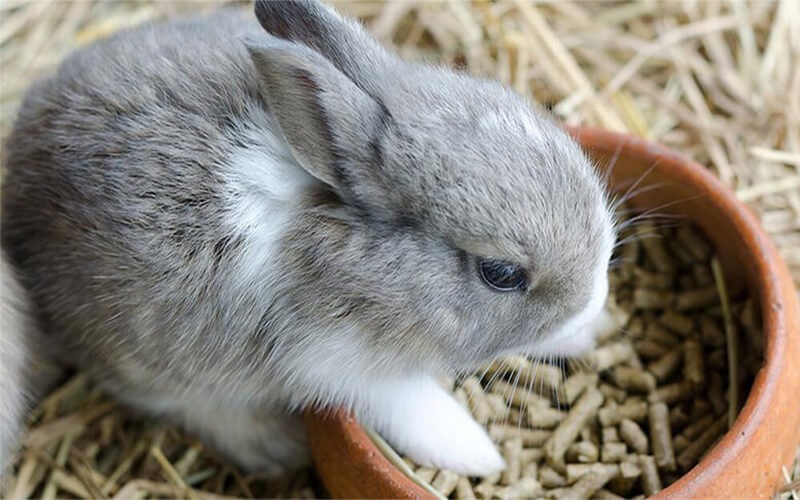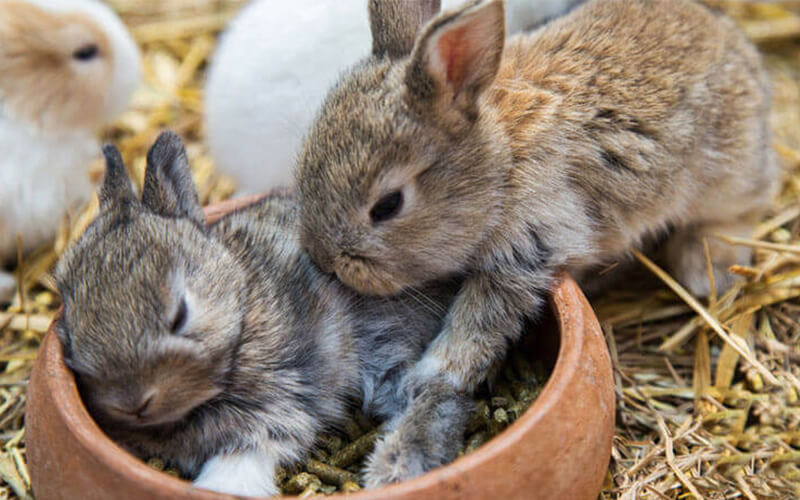what is rabbit feed pellet?
Rabbit feed mills produce pellets rich in vitamins and minerals for rabbits (details on making these pellets will follow). On average, rabbits eat approximately 1 ounce of pellets per pound of body weight.
Rabbit pellets have long been considered the base of a rabbit’s diet. But pellets are actually more important in the younger stages of rabbit development than in adult rabbits. That’s because they are highly concentrated in nutrients, helping ensure proper weight gain in younger rabbits.
As a rabbit reaches maturity, however, pellets should make up less of the diet- replaced with higher quantities of hay and vegetables. Overfeeding pellets in mature rabbits can lead to obesity, as well as other medical conditions.
Rabbits nutritional needs change throughout life! The nutritional needs of baby bunnies are much different than when they reach adulthood. Food should reflect and tailor to the changing nutritional needs of rabbits at their different life stages. A “one size fits all” style is definitely not the right approach to proper nutrition!
video of how to make rabbit feed
why making your own rabbit feed pellet?
Practical side.
Making your own rabbit feed is beneficial if you live far from a pet store and to avoid waste from uneaten store-bought food, as not all rabbits like it due to taste or unbalanced nutrients. By preparing rabbit food yourself, you save money and can balance the needed nutrients.
cheaper price.
It’s safer to make your own rabbit food because you’ll get a cheaper price than buying ready-made food. Rabbits love vegetables and as far as we know, buying them one by one is cheaper. Even if we had to make our own a little busy, at least you know that all the food you give is your bunny’s favorite food. Also, you will find new experiences through making.


good palatability.
Making your own rabbit feed includes starch pasting, enhancing feed pellet flavor and palatability to boost rabbits’ appetite. As a result, the food intake of rabbits can increase 10%-15%.
proper pellets rigidity.
Feed pellets are harder than wet-mix powder, suiting rabbits’ need to grind their teeth. They prevent nutritional imbalances from picky eating, enhance digestion, and aid gastrointestinal absorption.
sterilization and disinfection
also reduce the spread of disease. Pellet feed heated to 70℃-100℃ for a short time during pressing kills some parasite eggs and pathogens, significantly reducing rabbit diseases. Besides, it’s necessary to dry the feed pellets in time to avoid going moldy. In addition, the utilization of feed pellets can reduce feed waste and this is also cost-saving for the raisers.


feed pellet Nutrition for Rabbits
Rabbits are included in a family called Lagomorphs. Due to their unique digestive systems, rabbits require a diet that’s high in fiber, low in protein. Rabbits need carbohydrates, proteins, fats, fiber, vitamins, minerals, and water.
A good diet consists of pellets, fresh hay, water, and vegetables. Use treats like fruits or rabbit snacks sparingly and in small amounts. It’s important for your rabbits’ health and longevity that you commit to feeding it a proper diet.
4 steps of how to make rabbit feed pellets
preparing Raw material
Making rabbit feed pellets starts with pouring raw materials into a pit, moving them to an elevator via scraper conveyor, lifting for cleaning, screening, passing through a magnet cylinder, distributing, and finally crushing.
crushing process
Crushing is the second crucial step in making rabbit feed pellets. Material in the silo enters the crusher for crushing. A screw conveyor moves crushed material to an elevator, then to a distributor, and into the grinder mill machine for batching bin mixing.
mixing process
Mixing is the third key step in making rabbit feed pellets. Ingredients from the batching bin go through an automatic scale to ensure a fixed mixing ratio, with oil added. They enter a mixer, move to a crushing bin, then via a conveyor for secondary crushing, and finally to an inspection screen via an elevator.
After screening, particles of the right size go through a permanent magnet drum for vibration, then to the granulation bin via a distributor. If you’re not making your own rabbit feed pellets, you can mix crushed materials with a mixing machine.
pelleting process
Pelleting is crucial in making rabbit feed pellets. After pulverizing raw materials, the feed pellet machine granulates them in a bin, cools them, and then pulverizes them again. Workers grade the particles; suitable ones move to the finished bin, while they mix unsuitable ones again for re-entry.
basic rabbit pellet ingredients and rabbit feed formulation
Rabbit feed should contain at least 14% crude fiber, 2% fat, and 12% crude protein for a maintenance diet. Aim to meet or exceed the fiber minimum while keeping protein and fat levels low.
Fiber level of 15% to 17% is adequate. A level above 17% slows weight gain, ideal for neutered pet rabbits. Use fiber levels of 22.5% or more to combat obesity and hairballs. Protein should be 15% to 19%, with fiber always exceeding protein. High protein diets increase ammonia in rabbit urine. It would be better to keep protein in rabbit feed formulation closer to 15%.
Fat levels should be low, around 3% or less in rabbit feed ingredients. The higher the fat content of a pellet the worse it is for your bunny, because it can cause obesity. Avoid pellets rich in nuts and seeds due to high fat. Now that you know the machine and rabbit feed formulation, start making your own pellets.The rabbits will really enjoy them.


tips of feeding rabbit feed pellets
After choosing your pellet type, stick with the same brand and kind. Some rabbits do not do well to the sudden change in feed and could cause digestive problems. If changing feed, mix old with new to adapt the rabbit’s digestive system.
Make sure you have enough of the old feed to slowly change over to the new feed. Do this gradually over a period of at least one week. Consider buying a simple, cost-effective rabbit pellet mill to make your own feed and avoid changes. Store pellets in a cool, dry place, in a closed container. This way the pellets will be protected from dirt, sun light, dark. Try to keep the lid closed and this will lower the chance of bacteria.
Don’t mix grains and seeds with pellets; this leads to unbalanced diets. Limit feeding; obesity reduces lifespan. Give a maximum of 1/8 cup of high fiber pellets per 1.8 kg of body weight daily. Young rabbits can have unlimited pellets until 6-8 months, then switch to the advised maintenance amount.
rabbit feed ingredients formula
| rabbit feed ingredients formulation | Percentage |
| Barley | 25% |
| Oats | 25% |
| Linseed meal | 17% |
| Alfalfa meal | 28.05% |
| Salt | 0.2% |
| Vitamins and minerals | 2.75% |
| Lactation | |
| Ingredients | Percentage |
| Barley | 22% |
| Oats | 22% |
| Linseed meal | 25% |
| Alfalfa meal | 28.05% |
| Salt | 0.2% |
| Vitamins and minerals | 2.75% |
| Growth | |
| Ingredients | Percentage |
| Barley | 24% |
| Oats | 25% |
| Linseed meal | 20% |
| Alfalfa meal | 28.05% |
| Salt | 0.2% |
| Vitamins and minerals | 2.75% |
| Maintenance | |
| Ingredients | Percentage |
| Barley | 32% |
| Oats | 31% |
| Linseed meal | 9% |
| Alfalfa meal | 25.05% |
| Salt | 0.2%% |
| Vitamins and minerals | 2.75% |

